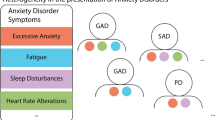Abstract
Rationale: Natural strain differences exist in mice for behavioural traits such as emotional reactivity. Objective: The present experiments compared the behavioural profiles of nine strains of mice (BALB/c, C57BL/6, C3H, CBA, DBA/2, NMRI, NZB, SJL, Swiss) in two models of anxiety after the administration of the benzodiazepine diazepam. Methods: The tests used were the light/dark choice task and the elevated plus-maze, two well-validated anxiolytic screening tests. Results: In vehicle-treated animals, differences on variables designed to measure anxiety-related behaviours were observed in both tests. In the light/dark test, the strains could be divided into three distinct groups: two non-reactive strains (NZB and SJL), an intermediate-reactive group (C3H, CBA, DBA/2, NMRI, C57BL/6 and Swiss), and one highly reactive strain (BALB/c). In the elevated plus-maze, SJL, NMRI, CBA and, to a lesser extent, C3H strains of mice, consistently showed low levels of anxiety-related behaviours. Intermediate levels were seen in the Swiss and BALB/c strains, and high levels of emotional reactivity were seen in C57BL/6, DBA/2 and NZB. The strain distribution between the light/dark and the elevated plus-maze tests shows similarities and differences, suggesting that each of these experimental procedures represents a different set of behaviours. Marked differences between a number of strains of mice in their sensitivity to the anxiolytic-like action of diazepam were observed in both the light/dark and the elevated plus-maze tests. Mice of the BALB/c, Swiss and, to a lesser extent, CBA and C3H strains were responsive to diazepam in both tests, although in the case of CBA mice, effects may have been contaminated by behavioural suppression. SJL mice were largely unresponsive to the action of the benzodiazepine in both tests, whereas in C57, DBA/2, NMRI and NZB mice, diazepam produced positive effects only in the elevated plus-maze. Conclusion: The finding of differential strain distributions both with and without diazepam treatment in the light/dark and the elevated plus-maze tests, indicates that not all strains of mice are suitable for investigating the effects of GABA/BZ receptor ligands. This study may thus provide a useful guide for choosing the best strain of mice for studying the pharmacology of fear-related behaviours.
Similar content being viewed by others
Author information
Authors and Affiliations
Additional information
Received: 24 March 1999 / Final version: 10 July 1999
Rights and permissions
About this article
Cite this article
Griebel, G., Belzung, C., Perrault, G. et al. Differences in anxiety-related behaviours and in sensitivity to diazepam in inbred and outbred strains of mice. Psychopharmacology 148, 164–170 (2000). https://doi.org/10.1007/s002130050038
Issue Date:
DOI: https://doi.org/10.1007/s002130050038




